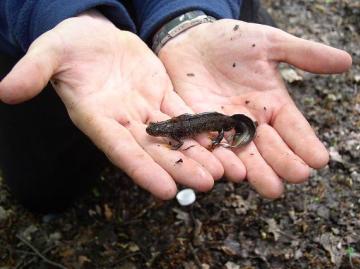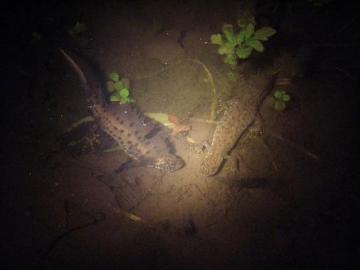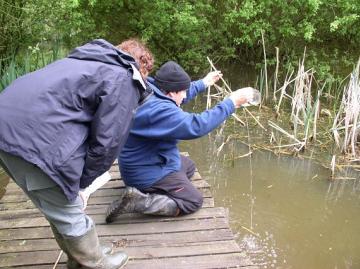Triturus cristatus

The largest of the three native newt species found in Essex. An adult newt can reach up to 17cm in length which would dwarf the other native species and the one non native species found in the county.
Great Crested Newt - 17cm Smooth Newt - 10cm Palmate Newt - 8cm Alpine Newt - 10cm+
The highest concentrations of records come from Rochford, Chelmsford and Basildon where it has a widespread distribution. The largest colonies are found in these three districts - Magnolia LNR & Anglian Water Flood Pound (est 2,000+ animals), Wat Tyler Country Park (est 1,000 animals) and Mid Essex Private Site (est 15000+ animals).
The species is 'rarest' or 'least common' in Tendring, Thurrock and Southend. Tendring is very much an underrecorded area for the species (only 4 or 5 old records). Southend is heavily urbanised which reflects the rarity of the species as it is most often found in the wider countryside in field ponds. Southend has 5 to 6 records with three to four secure sites while a few are threatened with development and others are isolated in Urban gardens (introduction sites). Thurrock also suffers from a lack of recording or reporting of surveys.
With an estimated 7,000 to 14,000 ponds within the county the figure of 350 crested newt sites (up to 2007) illustrates the lack of knowledge of the species within the county. In 2001 a review failed to determine the conservation status of the species with only 187 newt sites found within the county.
A records review is planned for 2008 to collate all the known information on the species into a new document to help planning departments, consultants and land managers to determine the context of their populations that they are working with.
It is hoped that the document can be updated following further submissions from consultants and other surveyors each year to help keep the information relevant and up to date.



















